[Editor’s note: Responding to emailed questions from Bruce Young, assigned by the official journal of the National Press Photographers Association (NPPA) to write an account of this blog’s inquiry into Robert Capa’s actions on D-Day and the subsequent fate of his images, noted photojournalist J. Ross Baughman drafted the following statements, which he sent to Young in October-November 2014. Only brief excerpts therefrom and paraphrases thereof appeared in Young’s account as published, drastically muting Baughman’s severe indictment of Capa and John Morris, his picture editor at LIFE‘s London office. To put Baughman’s full statement to Young on the record, I present it here, as written, in two parts. Part 2 appears below; click here for Part 1. — A. D. Coleman]
•
Reciprocity Failure (continued)
by J. Ross Baughman
In his creative autobiography Slightly Out of Focus, the landing boat’s crewman kicks a reluctant Capa off the ramp and into battle; and Capa later argues with another shell-shocked soldier aboard the hospital ship over who was the bigger coward.
Since Capa had seen battles in Spain, North Africa and Italy, he could not have been feeling like some shocked newcomer on Omaha Beach. The fact that he saw some casualties, but by no means an extraordinary number, shows that new levels of fearsome destruction were not the cause of Capa’s loss of nerve.
A combat photographer must commit himself to the battle scene at hand, become determined to not only survive it but to observe it all with skill and care. He or she must attach all fortunes to one or two of the troops, and stick close to them. Capa didn’t do that. The evidence shows in his photos, which are hesitant, delayed and distant from the action. He did not remain steadfastly joined to the GIs around him, and we know this because they stayed focused and progressed up the beach while he did not.
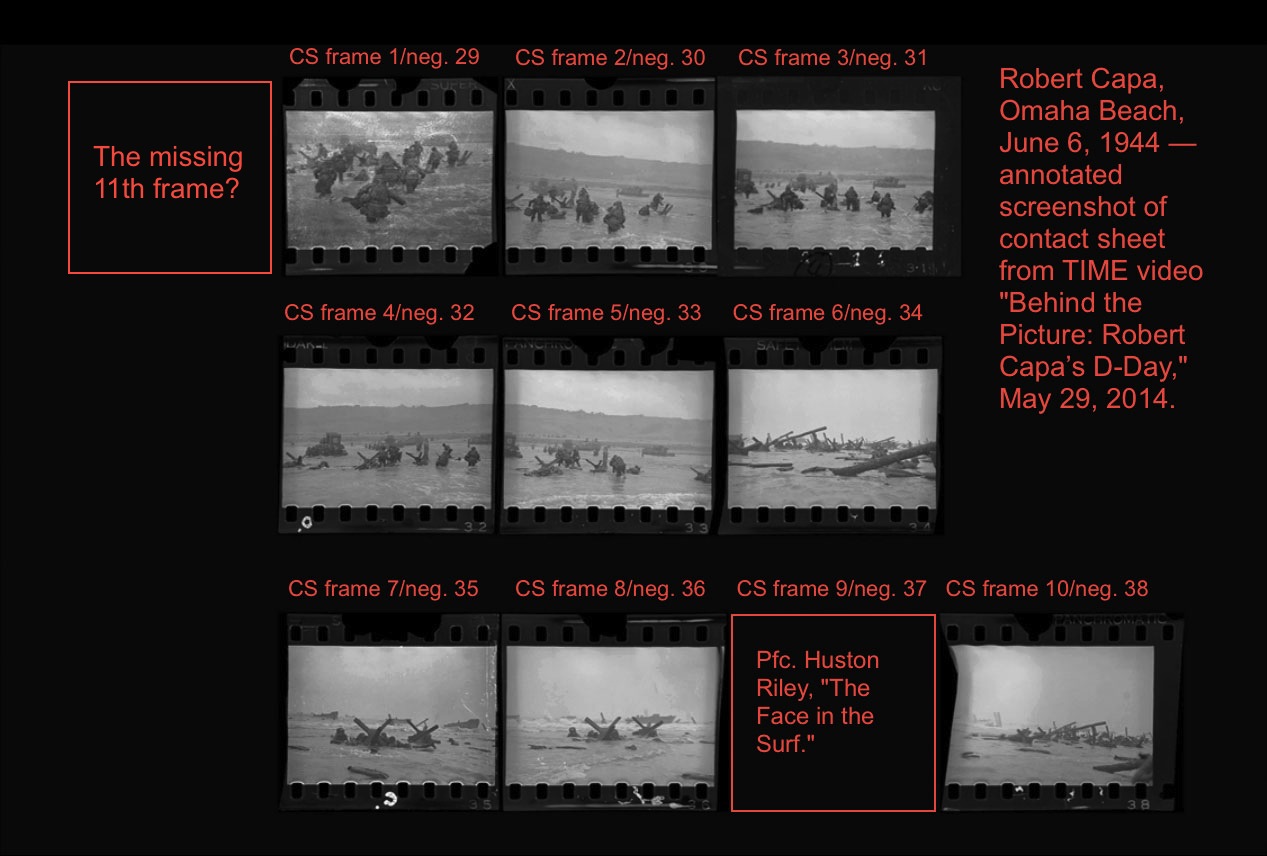
Robert Capa, D-Day images from Omaha Beach, contact sheet, screenshot from TIME video (May 29, 2014), annotated.
Was the starting two-thirds of the Super XX Omaha Beach roll of film blank? Given what we now know about the other pre-invasion images, I don’t even focus on this question too much. It’s possible that Capa had left his lens cap on, or that he botched all the exposures so badly that they were four, five or six f/stops underexposed. All that is purely speculative, and no longer especially pertinent.
We know now that the other rolls of film were not blank, but instead had lots of routine images of the troops before the invasion. We know for sure that Morris hid this material from the censors and his bosses at LIFE in New York. Why would he do that? Perhaps so he could take the loss out of Capa’s responsibility (since even seawater and keeping his equipment dry was his main work), whereas an accident in LIFE‘s lab could not possibly reflect badly on his favorite photographer. Saying that all the other film was lost could surround the surviving frames with the luster of rarity and tragic loss.
What was Capa doing during the 36-hour delay of getting his D-Day film to Morris? I believe he was agonizing over how to salvage the mess he had made. It is even possible that Morris and Capa together invented the story that would have to be told to LIFE in New York.
For this biggest story of his career, our estimation of Capa’s efforts must be clear-eyed. If I had been in Morris’ shoes, I would have felt that giving my friend this job had proven to be a huge mistake.
•
In late May 2014 I read the Marie Brenner article about Capa and the 70th anniversary of D-Day [in Vanity Fair]. On 28 May, I wrote to Morris on Facebook’s messenger with a question [formulated by] some of my students:
“Hi John, It was such a pleasure to read in Vanity Fair about your efforts on D-Day. My photography students were surprised that the plans to get Robert Capa’s film from Omaha Beach seemed a bit improvised, in that he stayed for such a short time and then brought it back personally. Did the few journalists there have other plans for getting their dispatches and pictures back across the English Channel? It struck our class as so wasteful for him to give up his privileged spot in the thick of battle when some other choice of arrangements must certainly have been made? Meanwhile, we all wanted to send you best wishes and thanks for sharing such powerful insights into world (and photojournalistic) history! Looking forward to any reply … “
Morris did not reply.
Then, after I saw the TIME. com video about Capa’s D-Day produced by Magnum, I had more questions, especially about the inclusion of [samples of] Capa’s lost negatives, which turned out to be forgeries.
It was all these mysteries that led me to write the guest column for Coleman’s blog. His willingness to publish my original essay was all I expected, and to be frank, I have been shocked at how much time and energy he has put into the follow-up research. To his considerable credit, Coleman’s discoveries since then have been remarkable, but he … has no experience with daily journalism or covering war. That’s why I contributed two more installments that attempted to analyze Capa’s photos from a strictly military point of view.
To your point about the ease of being a judge and belated second-guesser: I have covered war first-hand, and as an editor sent others to risk their lives in war. I feel thoroughly familiar with the pressures experienced on both sides, but I also know that there’s no point in taking on the effort if it can’t be seen in the finished photos. The tremendous costs and endless excuses have no point. A sterling reputation may become part of making the smartest bet when covering war, but when they don’t pan out, no one should be sentimental when planning the next move.
Capa’s many shortcomings on D-Day should have disqualified him from getting further benefits of the doubt. Those who continue to admire him should stop citing this day as a reason why.
•
The number of rolls of 35mm film that Capa shipped to Morris on 7 June has always been reported as four. In Coleman’s recent search of the ICP archives, there seems to be an indication of a fifth roll. I’ve never come across any suggestion of a far greater number that could allow for all the pictures we now have, plus three rolls of blank film. It simply won’t add up to that.
According to LIFE staff reporter Charles Christian Wertenbaker, Capa told him in 1944 that he had used up all his film on Omaha Beach, and that was the only reason why he stopped taking photos. That version of events would mean Capa took no more than four or five rolls of 35mm film with him to [cover] the invasion of Normandy, undoubtedly the biggest story for Allied forces during World War II. For anyone familiar with the ambitions and needs of any photojournalist, that simply doesn’t add up, let alone make any sense.
In other wildly different accounts, Capa says he stopped shooting because both of his Contax cameras jammed; but then he never complained about it or mentioned it again and never got them repaired, yet both cameras worked flawlessly through the rest of 1944 and 1945.
Morris has recently suggested that Capa might have sent back rolls of film that were never even exposed; but every war photographer I’ve ever known is ritualistically certain about how the used rolls get marked, with their leader tongues swallowed, and then segregated from the fresh rolls.
All this shows how much crazy, inconsistent damage control Capa attempted after the fact. Morris and LIFE also wavered through different versions before settling on one version of events.
•
Postscript: In the best kinds of journalism today, I always hope that a well-seasoned writer will help his subjects’ points of view to shine through it all. Unfortunately, in this latest exercise from the NPPA, Young and Winslow concentrated too much on their own preconceptions. — J. R. B.
•
(For an index of links to all posts in this series, click here.)
•
In 1978, at the age of 23, photojournalist J. Ross Baughman became the youngest professional ever awarded the Pulitzer Prize, and was cited for his coverage of the guerrilla war in southern Africa. While continuing to work that same year as the first contract photojournalist ever hired by the Associated Press, he competed against himself with two other nominations: For infiltrating the American Nazi movement over nine months to uncover their assassination and bombing plans and once more for being the first journalist to ever accompany Palestinian commandos operating behind Israeli lines.
Baughman soon went on to become an international lecturer on journalism ethics, a university professor and founder of the photo agency Visions, which specialized in long-term, high-risk, difficult-access investigative photo essays around the world. He has covered wars in 11 countries; his work has appeared everywhere from LIFE to Vanity Fair, Newsweek, Time, Stern, The New York Times Magazine and Vogue.
Some of his writings and photographs may be seen at Wikipedia and at his own website. For his previous Guest Post, click here. To contact J. Ross Baughman, click here.


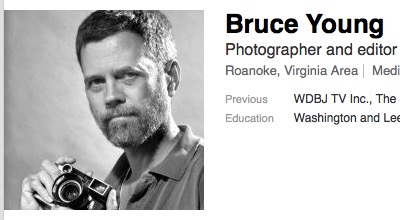
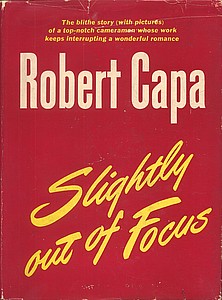
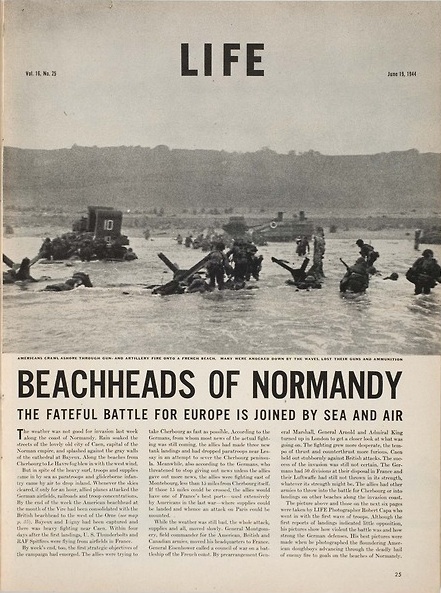
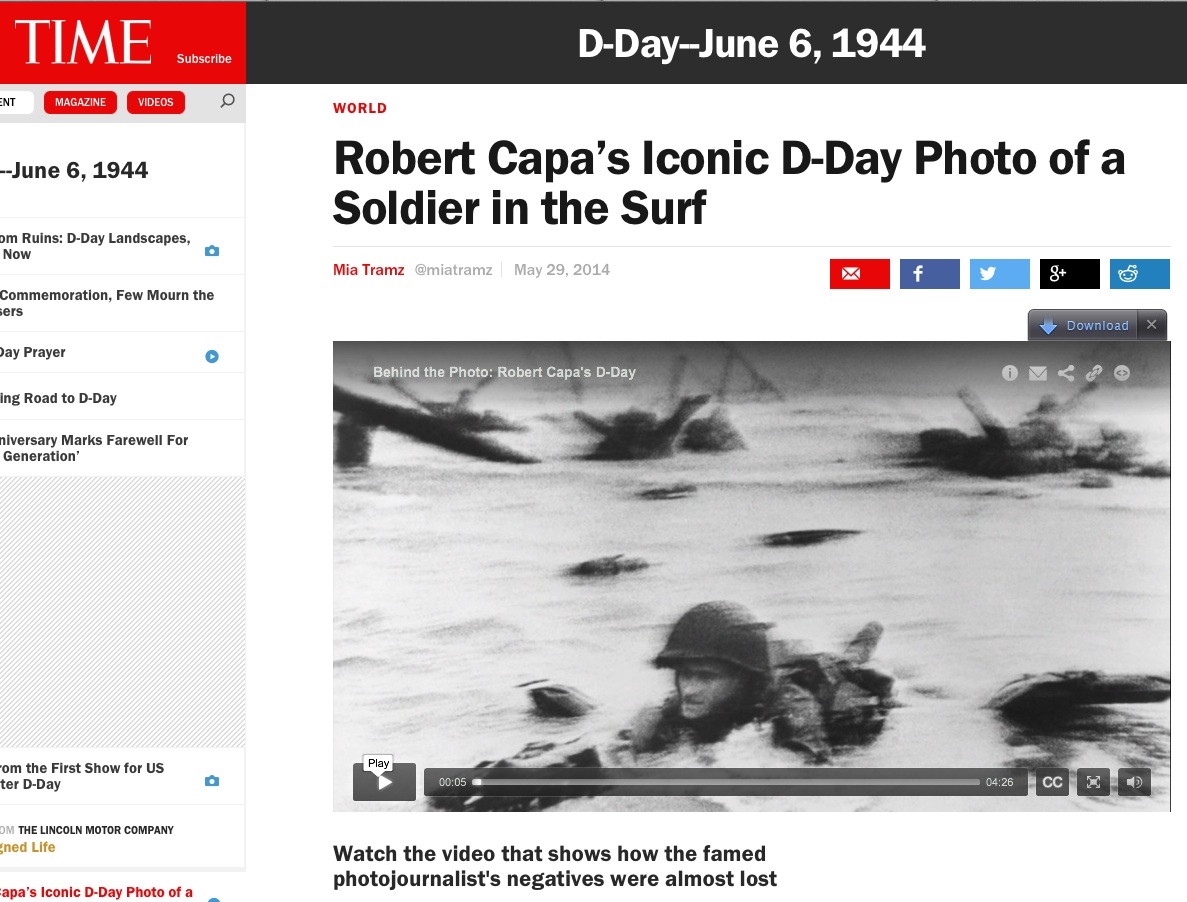
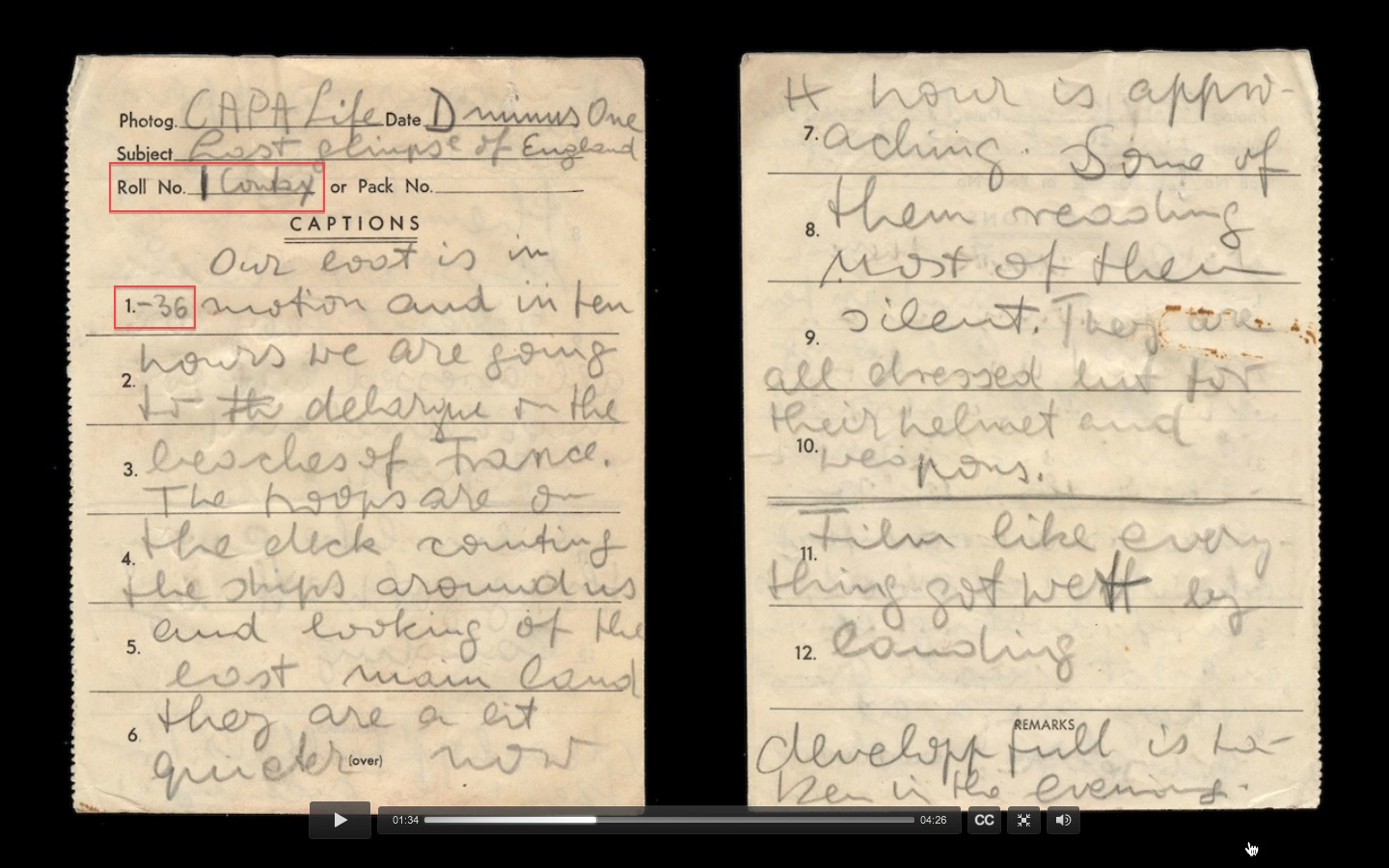
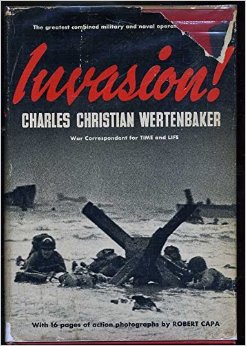
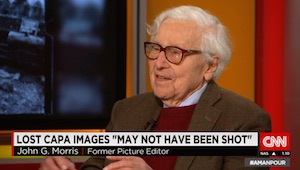






Leave a Comment